#especially for ttrpg's and fantasy in general
Explore tagged Tumblr posts
Text
perhaps spiritually piggy-backing off of @anim-ttrpgs' post here, but i'm feeling a sort of way about the number of games i've seen in recent years that seem to just... refuse to have (or perhaps more likely, acknowledge that they have) a pre-made default setting.
now, a couple of caveats i'll open with to differentiate from the cited post: i don't think every game necessarily needs to have a defined default setting. Legacy: Life Among the Ruins, for example, makes creating and filling in the nature and specifics of the game's setting part of the character creation process, which makes sense considering the way that one of your two playbooks in that game is an established faction/settlement, and something that big and influential you kinda have to let the players have more control over the world in order to be able to flesh out as their own unique "character" if you want them to be any less restrictive than fully pre-built factions you pick between. it also helps that in making world creation part of the first session's gameplay, this becomes a fun part of the game done collaboratively.
there are also plenty of games that don't want to have a specific setting (which doesn't automatically make them universal, by the way! and well-designed games know and understand this!) like Old-School Essentials or Fabula Ultima. games like this just want to be rules engines for a collection of well-worn tropes and/or modular toolboxes that can be mixed-and-matched or reflavoured for whatever setting you and your friends are most excited to use to engage in that game's mechanics with. these games will often have supplements that introduce optional mechanics or character options that
but then we come to something like Armour Astir: Advent, a game with a lot of pretty specific assumptions about its setting, and several original terms and concepts. and yet...
The very first part, and arguably one of the most important parts of playing Armour Astir, is setting up the world in which your game will take place. Other than the existence of a few things, like Astirs and other magical devices (which you and your group are free to re fluff to suit your personal tastes, of course), this game doesn’t assume much of your setting—meaning as a group you have a lot of freedom when coming up with the setting you’d like to play in. There are a few important things to iron out, however.
like... hate to break it to you, but players always have the freedom to refluff things to suit their personal tastes. i've been playing Pathfinder for over a decade, and you know how much of that time's been spent playing in the world of Golarion the game ships with? not even half. i've reworked Lancer to take place in the setting of Heaven Will Be Mine before. i'm currently working on adapting Legend of the Five Rings to be in a Chinese xianxia setting (which it honestly feels more suited for to me, than its original fantasy Japan-inspired setting).
the players do not need your permission to adapt your game for their own setting, if they want. but especially if you clearly have such a specific idea for what the setting should look like, much like shipping your game with a sample module to essentially function as a tutorial level both for how to play the game as well as for how to prep your own adventures for it, shipping with a sample setting both helps a new group start playing your game faster since they don't have to stop to homebrew all their own lore, but also helps give a better idea of what a setting for this game is expected to look like.
it doesn't need to be exhaustively fleshed out, you don't need a three-page timeline followed by dozens of pages of minute lore details including itemization of what each city's major exports are. it doesn't even necessarily need to be something that gets its own section in your book. D&D4e actually makes for a solid case example here. officially, there wasn't even supposed to be a "default" setting in the core books, just a generic "Points of Light". and yet, we still get plenty of proper names, geographical and historical references, and blurbs about, for example, dwarven society and how paladins fit into the world, all to help new players orient themselves and provide a framework that they can fill in rather than have to create from whole cloth.
note: a lot of this also applies, i think, to some of the apparent outrage in anim-ttrpgs' original post. "shipping with a pre-written module" does not need to mean a whole 200-page Curse of Strahd. the original Eberron Campaign Setting had a less than 10-page module at the back to use to jumpstart an Eberron campaign. the WotC website back during 3e had dozens of free adventures for nearly every level range that were sometimes as short as 3 or 4 pages. granted, these are all examples of an approach to adventure design that anim-ttrpg and i both consider flawed, but it's also a much more page-hungry format than the kind of module design we would advocate for!
#table talk#i should add that i do not by any means consider Armour Astir: Advent to be a bad game in any meaningful sense#it just worked as a good example of my pet peeve here#do please check it out regardless
38 notes
·
View notes
Text
Its so hard to properly articulate and even harder to find other places that are talking about it too but i feel like a big issue ive been facing recently, specifically with "Dungeons and Dragons" and "Minecraft" is that they both to me at least have been having very similar problems lately, namely that they are so big that they A. Cannot appeal to everybody and B. Are desperately attempting to
This then comes into a split where I feel with mojang its more the constant push to churn out more new things is bloating the game with stuff that has very few use cases, while D&D is suffering more from a place of the inspiration of the setting being so steeped in decades of not only iterations of the game but also the works that inspired it in a way that it is effectively incapable of shaking off any of the unfortunate tropes of the era of fantasy it was born in without disrupting the subsets of its playerbase that demand those aspects of the game go unchanged
Also within D&D specifically there tends to be a bunch of things on top of all that that make a hand at fixing the issues dnd has, but only really starts building the bridge it expects each individual game to complete, not that its always a bad thing to do that but in this case it just ends to make contradictory rulesets and solutions that dont actually really solve the inital problem in the first place
#anyways#if anyone knows of more places to look into this stuff#please let me know#especially for ttrpg's and fantasy in general#i love the genre and i love the learning and growth that comes with understanding something and taking it your own way#and in the process examining its shortcomings so that you can better tell a story about something else#but like i said before i struggle to find where to look#dnd#minecraft#ttrpg
2 notes
·
View notes
Text
you ever just see a super niche piece of d&d advice (idek if this is the right word for it) and feel an itch in your bones to make an entire zine that's effectively an essay talking about how much you dislike it and the ableist implications of it being enforced at tables but it's just for you because you don't share your thoughts with other human beings that'd be wild and you don't particularly feel like being told it's not actually ableist and you're just oversensitive and can't take a joke today. no just me never mind dw about it
#dungeons and dragons#dnd#d&d#ttrpgs#ttrpg#zines#zine making#for anyone who is interested it's truly so random but here goes the tags rambles we're being brave today and sharing our opinions#so I saw a tiktok (it was actually a reel but we move) of someone joking that as the barbarian in the party#they seem to know their party members' abilities more than they do#like they'll help out the wizard with what spells they have#or have a statblock ready for the druid's wildshape#and I was like huh this is cute and funny we love players supporting each other at the table#and then people in the comments were mentioning that they use timers in their home games??#so like people have two minutes to figure out what they're going to do and do it otherwise they lose their turn and the round moves on#and loads of people were going like “omg this is genius haha gonna do this myself”#and like I cannot express how humiliating it would be for me if I was thinking and someone whips out a literal stopwatch and is like#“go faster grr!!”#I'm chronically ill and neurodivergent and mentally ill and all of my disabilities can affect my cognitive abilities#meaning I can take longer to figure things out than other people or forget what I was doing or how to speak or whatever#and it just got me thinking more generally as well about the obsession with efficiency in our current culture#and how sad it made me that so many people are implementing such a humiliating tool of efficiency in their home games? with their friends?#and like sure if everyone is consenting and happy with it fine but I just hate the idea of punishing disabled people for being disabled#especially when so many of us use ttrpgs as an escape mechanism and a tool of fantasy#like I do not want my high int wizard to have debilitating brain fog that's not part of the dream for me yk?#anyway this is very random but I have been getting really into zine making this year#it's a very fun creative outlet and I find it doesn't have as much as the pressure that other creative hobbies have had for me in the past#we're sharing our opinions woo!! exposure is important in getting over fears and I hate that because it feels so icky!!
14 notes
·
View notes
Text
PROMPT: Home
Time: 20 minutes (1 extra)
~
[Set some time in the future, around a year or so after Arissa joins their new warband. Arissa has begun to relax around their new companions, seeing them as good friends now]
Sudenburg. What an exciting place to visit.
Arissa had come to call it a second base of sorts. There was always something happening in the market town. Someone was dying, a battle was to be fought, a trade show or town market to be held that week. If Arissa ever felt like they had hit a writer's block, they knew to take a trip to Sudenburg, to find more inspiration.
Yet, through all the noise of the border town, Arissa knew where to find some peace. Their warband's coffee house.
Market Week in Sudenburg had become Arissa's favorite time of year.
The comfy pillows, the brilliant rugs, jewelry hung from the beautiful scarves pinned to the canvas walls, the smell of coffees and teas being brewed behind the counter, it was all-too familiar by now.
Customers came in and out as the day passed. Arissa had taken to a front corner, sitting on a comfortable pillow, their notebook on a small table, their left hand writing notes on a new script, their right hand periodically touching the side of a teacup, waiting for it to cool down.
A few steps away, Arissa could hear the conversation between one of the warband leaders, and a customer. This person had taken a liking to a necklace for a lady-friend of his. Arissa kept their head down to stiffle a laugh, as he tried to barter down the price for the piece, begging the leader to see his "poor man's fight for love!".
Behind the counter, one of the other leaders were talking to another guest, making small talk as she made their order. The conversation was light, happy and full of joy. A talk of the upcoming talent quest. That evening always brought Sudenburg together. At first, Arissa dreaded it, thinking *someone* would appear out of Azyr and force them to perform.
Now, Arissa looked forward to it. The stories people would tell, they'd always inspire Arissa to keep writing. They knew now, their comfort on stage came from their own designs.
The chaotic shop was not-so-different to the environment Arissa had grown up in, but Arissa noticed the weight that they'd grown acustomed to at home had been lifted in the past year or so.
"No, that place is not home anymore. This is home. I choose where my home is." Arissa thought fondly.
"Home is where my heart is."
#im so excited to see arissa develop as a character#i have their vibes#a general plan for backstory#but thats about it so far#im so So excited to see where they go#especially with the warband theyll be in#im so happy already 🥰#larp#warhammer#warhammer fantasy#live action role play#rpg#larper#dnd#dungeons and dragons#ttrpg#swordcraft#rp#roleplay#warhammer oc#warhammer larp#arissa dameetha posting
1 note
·
View note
Text
Go read check out Unchained Mysteries by Jesse Burneko
I recently was altered to and read a treatise called Unchained Mysteries, and it’s incredible that I had never heard of it before. It’s not a TTRPG, but it is a treatise about TTRPGs, particularly mystery investigation TTRPGs, and how bad they have been for the past 50 years at actually doing investigation gameplay.
For the roughly two years since we went public with Eureka: Investigative Urban Fantasy, we have been fighting a war, an idealogical war on TTRPGs as an artform declared by monopolistic corporations, parasocial “”actual play”” shows, content mill YouTube channels and the loyal adherents of the above. The generals of this vast army, whether they consciously realize it or not, have a financial incentive to teach you that game design is not real and that it doesn’t matter. A consumerbase that understands game design or what a TTRPG is on even the narrowest, shallowest level is one where some people might sometimes choose to play something besides the most popular and heavily advertised game on the market when they are able to recognize that it does not suit their needs.
To this end they teach you “just ignore the rules when they get in the way of the story,” and “a good GM can make anything work.” They task the GM with putting on a one-man show so that people who do not like the kinds of experiences created by the rules of the most popular game do not ever have to engage with the experiences of playing the most popular game, but still buy all the most popular game’s products, and most importantly never buy anything else.
It’s been an uphill battle, but we have been able to carve out a little outpost for ourselves, convert others to the Game Design in Real faction, and occasionally make contact with like-minded individuals who fight for TTRPGs to be treated as a unique and meaningful artform and game, not just an annoying book that gets in the way of your improv session, as most self-identified fans of TTRPGs have been taught to treat them.
Unchained Mysteries is one of those times we discover a powerful ally, and it has been some real wind in my sails, lemme tell you.
As a TTRPG game designer, it really wears on the mind to get the same comments over and over and over from people who don’t even know enough about gleeblor to understand the position they’re taking, that all boil down to the same thing: Telling me that my work, and the work of others trying to design TTRPGs, is, at best, completely meaningless, because the rules we write shouldn’t be assumed to affect anything, that the right way to play TTRPGs is to just ignore the rules and make it up as you go. At worst, they get offended, and demand to know “why I’m trying to tell them how they should play the game” in the instruction manual for the game. And come at me with shonen hero monologues about how as an artist I have no right to even want people to engage with my art the way that I intentionally designed it to be engaged with, let alone have the audacity to express that desire. People’s right to not think about anything and put in the least possible effort for the quickest, shortest gratification is sacred, especially because game design isn’t real, so there’s no way that following the intent behind the design could lead to a more meaningful experience than just running off vibes.
And all this with the financial stress of being unable to keep a “normal” job due to disability, making my art my main source of income on top of the constant reaffirmation that large amounts of potential customers have been taught that the kind of art I’m best at and most passionate about, art that is really really trying to provide a particular experience through its design and intent, is the most undesirable kind of art, if they even know that kind art exists within the medium of TTRPGs at all.
Sorry about all that.
Anyway, it would have been cool to find such a well-written piece of writing that agrees with Eureka’s stance on investigative TTRPG gameplay on one point.
It would’ve been really cool to find such a well-written piece of writing that agrees on two points.
The points made, the problems highlighted, and the solutions proposed within Unchained Mysteries are about a 90% overlap with Eureka: Investigative Urban Fantasy’s, and presents them even more convincingly. (Which is to be expected, since it exists only to make these points rather than also being a whole game.)
If you’re interested in the arguments Eureka: Investigative Urban Fantasy makes and demonstrates about game design, give Unchained Mysteries a read.

#indie ttrpg#ttrpg tumblr#ttrpg community#rpg#ttrpgs#ttrpg#indie ttrpgs#eureka ttrpg#actual play#dnd#d&d 5e#d&d#dungeonsanddragons#starfinder#dungeons and dragons#critical role#dimension 20#d&d 5th edition#d&d 5.5e#wotc#eureka: investigative urban fantasy#eureka
164 notes
·
View notes
Text
I've talked before about how Critical Role is highly political because they as people live in the world, think about it deeply, and respond to it in their work all the time, even if it's sideways in subtext.
And so I think it's vital to understand that there is a fundamental divide between the context the characters in the Mighty Nein vs. Bell's Hells, and Campaign 2 vs. Campaign 3 were created in: the COVID-19 pandemic.
The Pandemic started mid way through Campaign 2, but the broad themes, tone, and narrative approach were already set. They'd defined the kind of threats they wanted to face.
Campaign 3 was created after we'd been living in the Pandemic for years and when it was clear our leaders and society at large had decided to "solve" it by completely ignoring it and denying it's still happening. Public health response in general started to be turned against and then dismantled. All the hope for change in the face of the horrors of 2020 turned to ash. There was no amount of harm the entrenched systems of power could do that would get people to turn against it.
In fact, it got worse. The last few months of Campaign 3 were played out in the shadow of the United States electing a known fascist promising to implement openly oppressive policies to rob everyone but cishet white abled Christian men of their rights and lives. Their city of LA literally burned down in the middle of the finale because these horrible people have prevented even basic climate change responses.
While Hasbro/Wizards of the Coast increased its iron grip on the TTRPG industry and also showed they'd hurt any independent creator for money. As the Pandemic and trade wars made the whole industry more unstable. All the joy and success WotC’s games have brought to Critical Role come with the strings that WotC gets to decide everyone else's fate. Especially if they're seen as a threat to that hegemony. If anything, it's the love and comfort that actually feed that terrible power. While Critical Role established their own TTRPG publishing wing and is increasingly going toe to toe with WotC.
So like, no shit they'd want to explore a whirlwind fight against the gods that came to their world from WotC. And the complexities that good vs. evil is not a useful framework for this fight. Sure you try to stop people you know will be even worse, but that doesn't mean that the existing system is good and that those who have the power to control everything should retain that control.
Politely persuading the Powers That Be to step back and be mortal like everyone else instead of all-powerful overlords is a conflict resolution power fantasy. Not every battle needs to be with swords. Violence can only ever destroy. Words are far more effective at actually rebuilding something worth living in. Even when you can't possibly know what that something is.
Change is necessary, and if it doesn't come soon we're headed for another Calamity. The past checks on that power have not worked, and it's clear that structurally they can't. We have got to do something else. That's terrifying, and maybe it'll fail, but it's unlikely to be worse than the current times we're living through.
#critical role#critical role meta#critical role company#critical role campaign 2#critical role campaign 3
80 notes
·
View notes
Text
worldbuilding in spiritkeep
okay howdy again :) the second place winner of the spiritkeep poll was to talk about worldbuilding!!
for new folks, spiritkeep is a multiplayer campaign ttrpg designed around inducing therapeutic emotional growth
if you want to learn more about the playbook options you can find the write up here and the deep dive into the lonesome playbooks and the minder playbooks here
so … worldbuilding!!

collaborative worldbuilding is actually the first stage of play, even before you make your characters. i took inspiration from yarnspinner by edda mendes and spool by jade ravens especially, as well as the community building aspect of songs for the dusk by kavita poduri
there are a few things about the world of spiritkeep that always stay the same:
1) this is a fantasy world with low/no tech, and medium-high magic (i think some people would call it low magic because the pcs aren't terribly powerful, there isn't a spellcasting system, and also because they're used to thinking of high magic as looking specifically like medieval european fantasy. but there is actually a lot of magic in this world even if a typical human isn't particularly high powered)
2) there are various lineages of human, but all the pcs are human. (a notable exception is the othered archetype, which includes paragons for werecreatures, changelings, and ghosts. these characters are still humanoid though!) the lineages include what we would think of as regular humans and then various kinds of people, diverse in appearance and beliefs, who are descended from humans blessed or cursed by spirits. we'll get more into that next time!!
3) the world is inhabited by humans, animals, and spirits. the worlds of spiritkeep are animist and inspired by nature religions. in particular, i took a lot of inspiration from slavic paganism, shintoism, and various indigenous american religions but most specifically diné religion. in spiritkeep, many aspects of nature and daily life have spirits, from homes to rivers to trees. many spirits have minor magical abilities, and most will stay fairly hidden or out of the way, but there are rarer spirits who are quite powerful. parties will have to interact with spirits sometimes, such as doing favors for or solving problems for them to get boons
4) humans also have their own spirits. there are times when these spirits become independent & tangible enough to interact with. this is how pcs get advancements, boons, and can change playbooks. your spirit can also be harmed, though, so watch out!
5) the game always takes place in a community that is struggling and in need of repair
the rest of the world is up to the players to flesh out during the session zero!!
the session zero includes worldbuilding and community building. players will decide on details about the major cities, cultures, and geographic features in the area. they'll also work together to decide on more thematic elements like conflicts between groups of people, spiritual traditions, or the presence of bigotry within the world (yes, there can definitely be explorations of bigotry in spiritkeep. i am not an ascriber to cozy game escapist fantasy culture and i dont think those work well for the purpose of this game)
after a broad sketch of the world is laid out, the group turns to building the community. here, they'll focus on a few aesthetic features of the community, community values, and a few major features (does the community have a doctor or no? do they have a post office? is this a farming community or do they trade textiles? what are people's houses made of? etc)
i have a general idea on how to make the collaborative worldbuilding process approachable, cooperative, and safe, but it definitely needs playtesting before i explain :) im approaching this with the mindset of 1) players hard no's will have already been discussed in a separate process 2) players might be strangers to each other and might have never played a ttrpg before. i also want it to be feasible both in person and on a vtt. so i'm still working that out :)
so that's the basics! a baseline that all games follow, while the cultures and settings within the world are still pretty flexible
next up i'll be talking about the lineages, or the different kinds of human you can be!!
i also have a bunch of stuff on sale right now to fund spiritkeep in its early stages!!
you can support this sale to fund more promo material like art, and this sale to help me pay to become a certified therapeutic gm!!
thanks for reading :)
57 notes
·
View notes
Text
GM Resources
Here are my favourite websites that help me prepare and run TTRPG sessions (I mainly play D&D 5e but many of these will also work for other games). All of these are either completely free or have a free base version.
2-Minute-Tabletop: Lots of free tokens, maps and more! Also contains some content you have to pay for, but the free selection is usually enough for me. Very useful, especially if you're running online games. You can even customise the tokens' colours.
Lost Atlas: A huge selection of free maps, with filters to help you find exactly what you're looking for.
Falindrith's D&D Monster Maker: Create custom D&D monster statblocks. Lots of customisation options, from spellcasting to legendary actions. Very useful if you want to create a unique BBEG, but too complex to use for minions imo.
Fantasy Name Generators: You've probably heard of this one before, but it's incredibly useful. Whether you need to quickly come up with some NPC names, figure out what that town is called, or invent an extra riddle because your players solved the puzzle way too quickly, you'll find what you need here. It's very versatile and even has specific name generators for some RPGs!
Azgaar's Fantasy Map Generator: This is my favourite world map tool. You can generate a random map and then customize it until it fits for your campaign. You can let it generate country and town names for you or come up with your own.
Dungeon Scrawl: Create your own digital battle maps. Base version is free, but you can pay for a premium version if you want more features. Not as quick as simply downloading an existing map, but you will be able to create exactly the kind of map you want.
I Loot The Body: Great if you need to quickly generate loot, treasure, or NPCs (I mainly use it for the latter). Compatible with D&D 5e and Pathfinder 2e.
Nuudel: Wonderful tool for planning the date and time of your next session. Easy to use and it works very well. If you make a poll with it, make sure to select "All voters can modify any vote", otherwise it can lead to problems if people want to edit their own answer. The website is German but you can switch to a different language in the drop-down menu in the top right corner.
These are just the ones I know off the top of my head, if I remember or discover more websites/tools I will update this post.
Feel free to reblog and share your own resources!
83 notes
·
View notes
Note
Do you have a ttrpg where the players can be at massively different points in their individual progression? For example, a level 1 character in the same party as a level 5 and a level 20?
Hello friend! Character progression can be a tricky thing to track in many ttrpgs, especially when your character's abilities are more narrative than mechanical in terms of how they relate to the plot.
For example, Powered by the Apocalypse games often have a form of lateral advancement, in which your character grows by taking a new character playbook, often engaging in a soft reset as they take on new strengths and weaknesses.
Other games, like World of Darkness or Genesys (Star Wars Fantasy Flight), use a point-buy system. Depending on how you spend your points, your character could be highly specialized, or much more general - specialized characters would be very good at one thing, but terrible at others, and generalized characters might feel like they are advancing very slowly.
Then there's the OSR, which houses a lot of games that don't really have your character level up at all: they may survive long enough to get gold, which they can use to buy better gear, in which case their progression is mostly a larger collection (or more high quality collection) of stuff.
With all of that said, let's take a look at some games that might be in the ballpark, and some games that might be a bit outside your comfort zone!
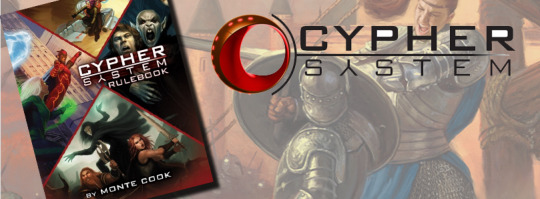

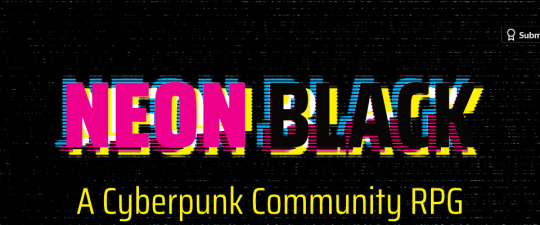
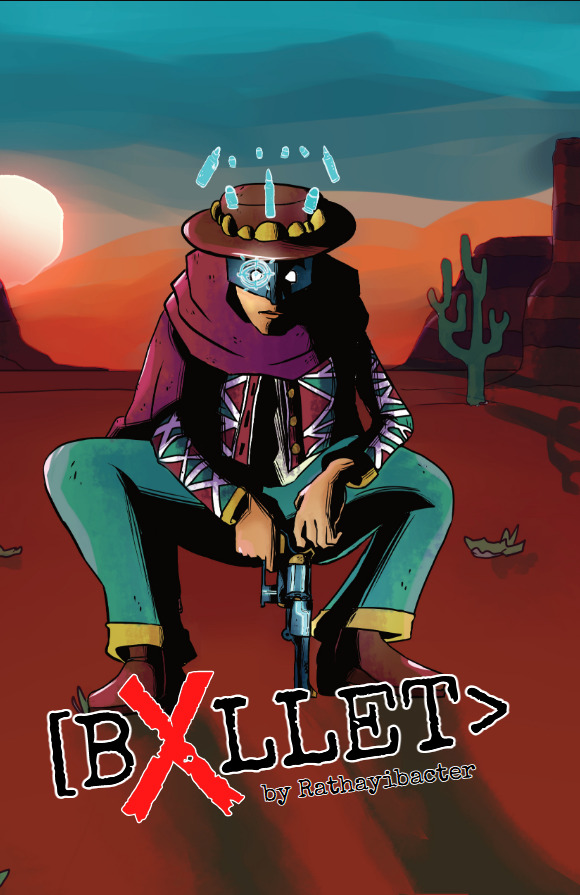
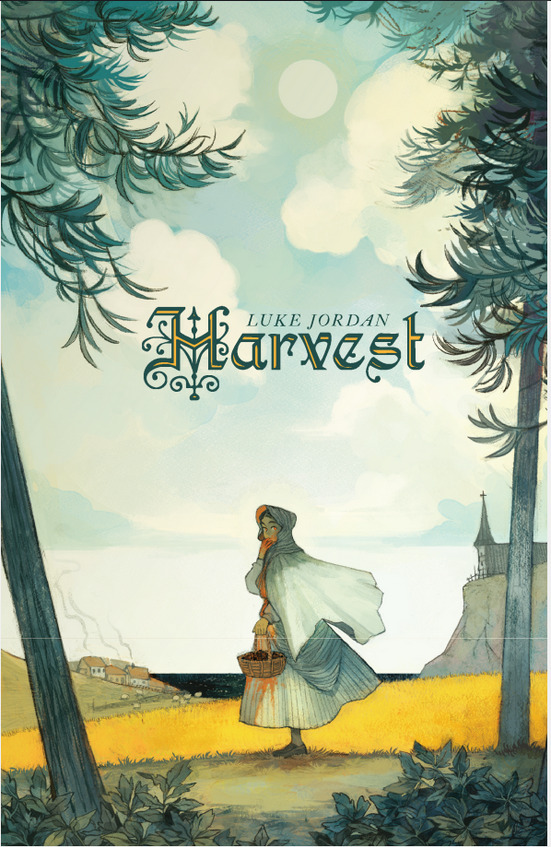
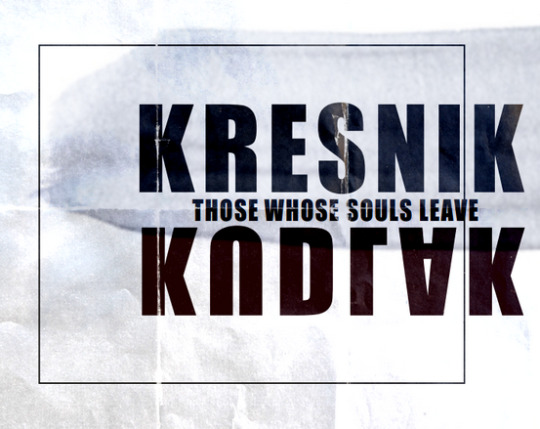
Cypher System, by Monte Cook Games.
Cypher System characters are built from the concept up. A descriptive sentence provides not just an easily-understood overview of the character, but also the mechanical basis for skills, abilities, and stats. And the Cypher System gives players amazing narrative engagement, rewarding player-driven subplots and giving players resources to bear on the tasks and situations they most want to succeed at.
The Cypher System does a really good job of giving players short-term, interesting abilities in the form of Cyphers, which means that once in a while, a Level 1 character will be able to do something equally cool to a Level 6 character, which is the highest level in the game. Character progression is also slightly non-linear, depending on how the players like to play.
Experience in Cypher System games can be saved up to gain better stats and new abilities, but it can also be spent to prevent disaster happening to your character through the form of GM Intrusions, or to invoke some player control over the story, via a mechanic called Player Intrusions. I don't see this form of using XP happen often when I play, but the fact that these options are available means that the system has to feel equally fun to both low-level and high-level characters, even if they're playing at the same table.
Yazeba's Bed & Breakfast, by Possum Creek Games.
Our story begins in a sprawling old house outside time and space, where it’s always September 15th and there’s always room for a new visitor. A teen girl sits on the windowsill, reading a well-worn paperback and listening to the splashy-crashy rain come down. She's alone in the world, but soon enough the strangers who reside here will become her closest friends, family, and mentors.
Yazeba's Bed & Breakfast can be played in a non-linear fashion, with different players (and characters) each time. It's an excellent game for groups that have different energy levels, meet haphazardly, or maybe have too many people to all get together on the same gaming night. As a result, characters are likely going to grow at different rates, but due to the nature of the game, these characters can move through chapters at any level of personal growth. I think the result is kind of like when you play a game that gives you different results depending on what skills you've achieved at the time you choose to fulfill a certain quest, and as a result, multiple play-throughs are likely to feel rewarding, rather than repetitive.
Neon Black, by NotWriting.
Neon Black is a role-playing game about a community of poor people fighting back against tyrannical corporations and the indifference of the rich, as well as surviving in a dystopian city state. It’s like real life, but in this world you can kill the CEO’s, rob banks to pay rent, and help your friends do the same. You'll help your community, go on dangerous heists, explore artificial realities, and encounter friendly and nefarious machines. We play to find out if the community can survive amidst warring corporations, an unforgiving climate, and the negligence of the extravagantly wealthy.
Like many Forged in the Dark games, Neon Black is built around the crew, rather than the individual members that make up the crew. This means that these kinds of games are often built with the possibility of different characters showing up for different jobs, whether that's because one player has more than one character, or because different players might be available at different times. You could have a well-seasoned character who needs to lay low after pulling off a big heist, and then introduce a fresh-faced newbie to fill their slot while your older character tries to recover.
Forged in the Dark games also often care about group progression, which can add new benefits to everyone who plays. More advanced characters are likely going to have more toys to play with, but each character ability is also often specialized enough that you're only going to get to use one or two in any given session. As a result, I think these kinds of games are excellent for players who can't make it to every session.
BXLLET, by Rathayibacter.
The world was broken, a long time ago. We've fought hard to build something better in the aftermath, but we're haunted by the ruins, weapons, and monsters of the past. Will you scratch out a corner of paradise, or will you give in to the temptations of the gun on your hip?
[BXLLET> is a game about systems of violence and power in a world rebuilding itself. As wandering gunslingers, you'll travel the world and do what you can to help the people you encounter. You'll become more powerful the more bullets you carry, but you'll also struggle with the responsibility that power carries with it. Violence will come easily to you, but can you feed crops with rivers of blood?
This game deals with issues of gun violence, exploitation, and apocalypse, and those sensitive to those issues should go into this fully aware. It's not a game for fascists, bigots, capitalists, or their lackeys, and shouldn't be approached from a perspective that boils the complexities of the world into "good guys with guns vs bad guys with guns."
Because your experience in this game is also the method by which you kill people, BXLLET expects some characters to have access to more special abilities than others, depending on how prone they are to violence. Not only that, your character can actually drop in ability just by shooting something, because as soon as you use a bullet, you lose the thing you need in order to access some of your character abilities. The game itself is a statement about violence and guns, so I think it's really interesting how those thoughts are incorporated into character growth (or perhaps, depending on how you see things, the lack of it).
Harvest, by gamesfromthewildwood.
Harvest gives us laden orchards and barren fields; desperate fervour and doubts grown thick as weeds; calves born and pigs slaughtered; proud traditions, failing wealth, and hostile stares; juice-stained lips and dirt under nails; and always the questions echoing down through the generations: ‘Whose blood must be spilled to feed the land?’ and ‘Whose hand will hold the knife?’
In Harvest, you play the residents of a remote island community stranded somewhere off the British coast around the end of the eighteenth century. On the mainland, old traditions are fed into the engine of Empire—languages crushed and folkways flattened under the imperial heel. Trains chew through the countryside as industry marches grimly on-wards. Yet here, separated from towering smokestacks by the fathomless sea, they survive unchanged.
Horror games in general have the opportunity to give you vastly different character experiences, depending on the choices characters make. Harvest is a Belonging-Outside-Belonging game, which is a rules system that typically doesn't see a lot of character level-ling at all - but what it does have is a token system.
Tokens are resources that can be spent for a significant benefit, and in Harvest, one thing you can use them for is to protect the community and help it survive, but another thing you can use them for is to activate dark and terrible powers. Typically in order to gain these tokens, you have to play into the tropes of your playbook, or do things that bring the narrative towards a conflict-ridden climax.
The biggest downside for games like this is that I think they're not really built for a campaign. Character progression can look very different, but it all happens in the short-term: in this game's case, over 3-4 sessions.
Kresnik|Kudlak: Those Whose Souls Leave, by Tegeljerk.
Kresnik|Kudlak is an apocalyptic supernatural dramatic thriller setting. In an alternate time at the end of the Cold War where the greying phenomenon threatens to plunge the globe into winter forever. The colder it gets the more haunted the world becomes.
The players take on the role of spirit powered Kresnik who help their communities navigate this apocalypse. They will pit themselves against the threats of change, helplessness, isolation, violence, and the unknown. Can they eek out success in the face of a uncaring world? Will they freeze? Or will they break and fall between the cracks, becoming a monster, a Kudlak?
An alternate take on horror media, Kresnik|Kudlak is all about pitting your characters in between two states of being: a Kresnik, who has the resilience to survive in a changing world, and a Kudlak, a monster too exhausted to try and take care of their community. This game doesn't really seem like it has typical character progression: rather, your common goal is that of changing the community around you, while trying to avoid the definitive end stat that is becoming a Kudlak. Any game that has options is also a game that allows players to interact with the world as two characters at very different stages of growth/decay.
For Further Reading…
Liminal Horror, by Goblin Archives.
Failure as Growth Recommendation Post
Helpful Detriments Recommendation Post
Games with Two Sets of Players
Asymmetrical Games Recommendation Post
Deteriorating Characters Recommendation Post
Collecting Curses Recommendation Post
If you like what I do and want to leave a tip, you can check out my Ko-Fi!
35 notes
·
View notes
Text
introduction to the WORMS IN MY BRAIN jk this is a modern fantasy au for baldurs gate 3 plain text and more info under the cut
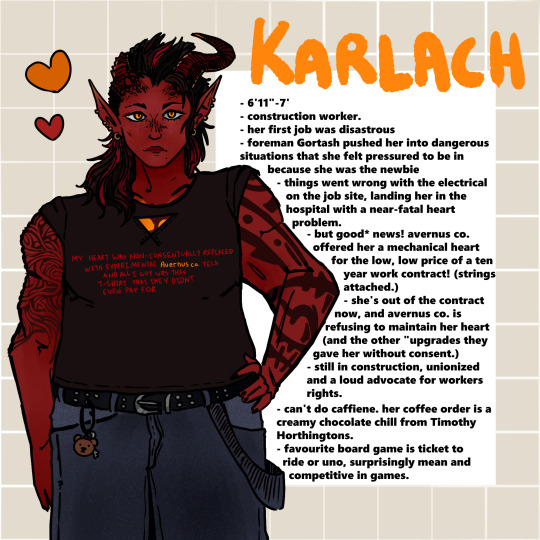

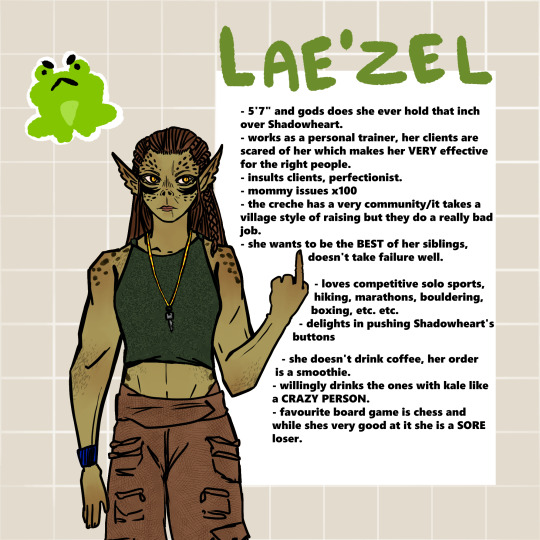
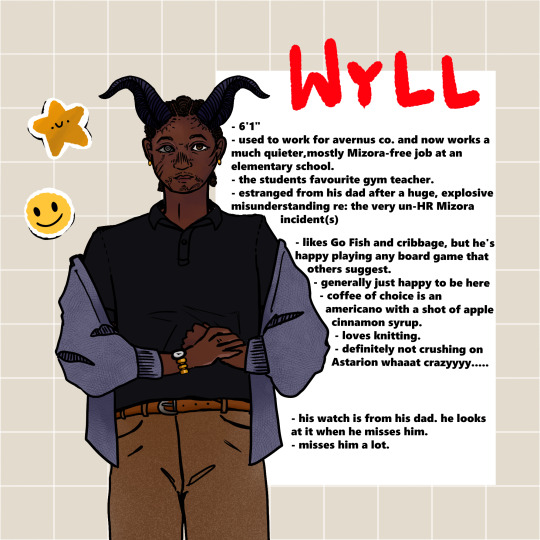
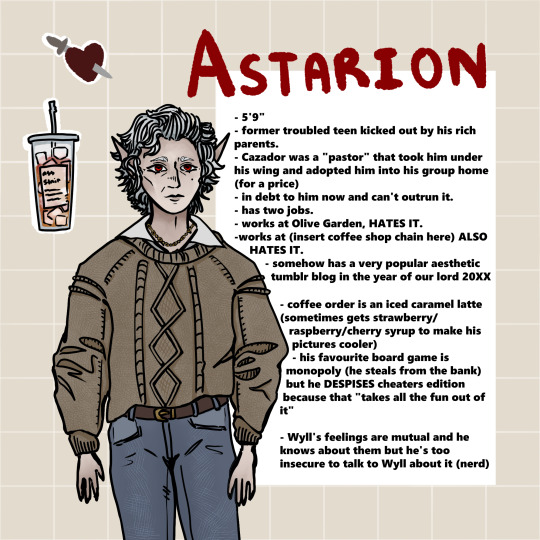
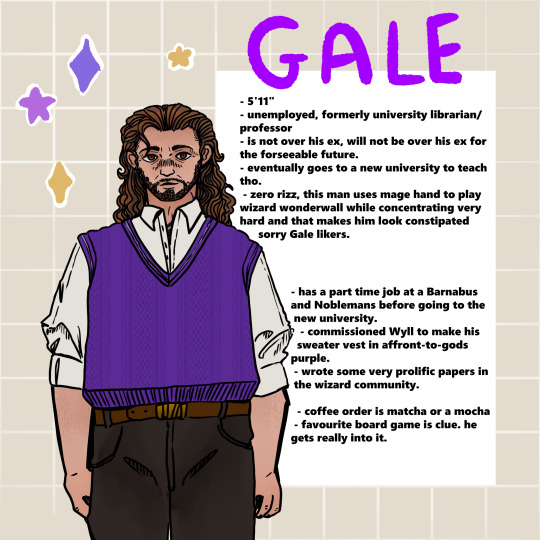
intro to the au, forewarning i haven't done much research, and my first playthrough of the game isn't done yet (I AM in act three tho I swear 2/3rds of the three guys r dealt with and so is cazador.) keep in mind i have no idea what i'm doing.
the mindflayer stuff is like. an experimental implant they all dubiously agreed to without all the info. extra enhancements (like the other tadpoles in game) are like drugs, and they appear once weekly at everyone's doors whether they want it or not. initial implant stabilizes Karlach's engine, helps with Astarion's vampire stuff, etc. etc. and the extras just feel good to use, it's addictive.
all of them are in a support group together meant to encourage them to stay clean from the extra tadpoles. time they've spent with the group varies.
there WILL be more detailed posts for them later, i have a lot of thoughts on Karlach and Wyll especially. implied/possible shadowzel and wyllstarion. my tav will be present, this is very self indulgent and i am in lesbians with Karlach.
plain text for images:
KARLACH
6'11" - 7'
construction worker.
her first job was disastrous.
foreman Goretash pushed her into dangerous situations that she felt pressured to be in because she was the newbie.
things went wrong with the electrical on the job site, landing her in the hospital with a near-fatal heart problem.
but good* news! avernus co. offered her a mechanical heart for the low, low price of a ten year work contract! (strings attached.)
she's out of the contract now, and avernus co. is refusing to maintain her heart (and the other "upgrades" they gave her without consent.)
still in construction, unionized and a loud advocate for workers rights.
can't do caffeine. her coffee order is a creamy chocolate chill from TImothy Horthingtons.
favourite board game is ticket to ride or uno, surprisingly mean and competitive in games.
SHADOWHEART
5'6"
works at hot topic (emo)
just got out of the commune, full swing edgy phase and does NOT know how un-niche her music is yet (please don't tell her)(she might cry)
"adopted" by Shar's cult when she was little, doesn't remember much before or after that beyond what other members told her.
dissecting her faith.
roommates with Lae'zel. (they hate each other)
"roommates" with Lae'zel also. (they still hate each other) (kinda)
rps her fursona COOL CAT CHARACTER DO NOT STEAL online.
very afraid of wolves which does include sparkledogs and makes rp super difficult.
her favourite board game is catan or any ttrpg.
if asked, her coffee order is "black, like my tortured soul" but she actually gets a vanilla latte with extra syrup and sweet foam. (oat milk because regular makes her tummy hurt)
LAE'ZEL
5'7" and gods does she ever hold that extra inch over Shadowheart.
works as a personal trainer, her clients are scared of her which makes her VERY effective for the right people.
insults clients, perfectionist.
mommy issues x100
the creche has a very community/it takes a village style of raising but they do a really bad job.
she wants to be the BEST of her siblings, doesn't take failure well.
loves competitive solo sports, hiking, marathons, bouldering, boxing, etc. etc.
delights in pushing Shadowheart's buttons.
she doesn't drink coffee, her order is a smoothie.
willingly drinks the ones with kale like a CRAZY PERSON.
favourite board game is chess and while she is good at it she is a SORE loser.
WYLL
6'1"
used to work for avernus co. and now works a much quieter, mostly Mizora-free job at an elementary school.
the students favourite gym teacher.
estranged from his dad after a huge, explosive misunderstanding re: the very un-HR Mizora incident(s)
likes Go Fish and cribbage, but he's happy playing any board game the others suggest.
generally just happy to be here.
coffee of choice is an americano with a shot of apple cinnamon syrup.
loves knitting.
definitely not crushing on Astarion whaaat crazyyyy.....
his watch is from his dad. he looks at it when he misses him.
misses him a lot.
ASTARION
5'9"
former troubled teen kicked out by his rich parents.
Cazador was a "pastor" that took him under his wing and adopted him into his group home (for a price)
in debt to him now and can't outrun it.
has two jobs.
works at Olive Garden, HATES IT.
works at (insert coffee shop chain here) ALSO HATES IT.
somehow has a very popular aesthetic tumblr blog in the year of our lord 20XX
coffee order is an iced caramel latte (sometimes gets strawberry/cherry/raspberry syrup to make his pictures cooler)
his favourite board game is monopoly (he steals from the bank) but he DESPISES cheaters edition because that "takes all the fun out of it"
Wyll's feelings are mutual and he knows about them but he's too insecure to talk to Wyll about it (nerd)
GALE
5'11"
unemployed, formerly university librarian/professor.
is not over his ex, will not be over his ex for the foreseeable future.
eventually goes to a new university to teach tho.
zero rizz, this man uses mage hand to play wizard wonderwall while concentrating very hard and that makes him look constipated sorry Gale likers.
has a part time job at a Barnabus and Noblemans before going to the new university.
commissioned Wyll to make his sweater vest in affront-to-the-gods purple.
wrote some very prolific papers in the wizard community.
coffee order is matcha or a mocha
favourite board game is clue. he gets really into it.
#:) art tag#snuurps bg3 au#baldurs gate 3#bg3#karlach#astarion#shadowheart#wyll#laezel#gale#digital art#baldurs gate 3 au#implied shadowzel#implied wyllstarion#shadowzel#wyllstarion#gales alone guys sorry he needs to work on himself and maybe learn a better song on guitar#astarion ancunin#karlach cliffgate#gale dekarios#wyll ravengard#im tagging this with everything sowwy#baldurs gate 3 fanart
102 notes
·
View notes
Text
Game Reactions: Maharlika RPG [Filipino Anime Mechs!]
Link: https://tagamantra.itch.io/maharlika-rpg-core-rulebook

I picked Maharlika up last year at EGX (or what used to be EGX, having now been swallowed up by Comic Con) - I’d never heard of it before, but I’d gone determined to come back with a new TTRPG, and was it more exciting to buy a book that is a known quantity, or something I didn’t know existed before I saw it? Especially when it had mechs! I’ve always been a sucker for mechs. Honestly, I think my first exposure was Earthsiege 2 on the PC. Equipping different weapons on each arm, adding shoulder-mounted rockets, managing heat etc, amazing! In my late teens a friend introduced me to Gundam Wing, then Macross Plus. Somehow I fell off then, and have always wanted to really get into Gundam but never managed it. This year though, I watched Iron-Blooded Oprhans (great) and finally started to watch 0079 Gundam, listening along to the Great Gundam Project podcast. I’m halfway through Zeta now and am loving it. Needless to say, this all had me properly in the mood for reading Maharlika.
As a quick introduction, this is “a technomystic Science Fantasy mecha RPG inspired by Filipino Mythology, centered around Mekanized Weapons or Meka, and their pilots: the eponymous Maharlika.” If that sounds like a lot, it is. If that sounds awesome, yes it’s that too. It’s heavily based on Lancer, as I understand it (I own Lancer but haven’t gotten around to reading it yet), so it’s rules-light for the narrative beats and has crunchy tactical combat, which is its main focus. It’s a decent size at 220 pages, but much closer to regular book proportions than some hefty D&D tome.
Where it differs is obviously in the setting, with the designer bringing an incredible world to life by introducing the Filipino mythology. The pilots, or Maharlika, are generally teenagers (of course) who have established a connection with a divine being that becomes, in the books own phrasing, kind of like an onboard AI that allows the pilot to control these mechs that otherwise a human mind and body would be unable to. The writing really impresses on you the power of these beings, and the extent to which humans are playing with forces they don’t understand. Hey, it’s definitely anime mecha. This is just scratching the surface, as the game is far future, and very cyberpunk. Aside from the divine beings from another plane, there are aliens (including one previously invading force that humanity barely fought off), and a system of megacorps that are each as awful as the last in their own special way. These corps are the guys you’ll largely be doing missions for, and will not hesitate to come after you if you fail. All of this setting is fully realised, there are unique terms for everything, like your pilot being a Maharlika, connected to their Diwata, using their Gahum Reactor-powered mechs to do missions for the Lakanate. It definitely gave me a headache trying to keep track of everything, and honestly I’d be anxious about trying to run it, but it a cool enough world that I’d want to give it my best shot regardless.
Happily, the art is fantastic and helps to visualise the maximalist setting. A significant chunk of the book is dedicated to running through each of the five megacorps and a selection of their mech designs. Every corp has some unique approach, like the militaristic SD-SK or the theocratic KLL, and their mechs are very stylised to match. The art for each is gorgeous, I can’t show you all of my favourites or I’d be sharing half of the book, but check out the shot from the itch page below.
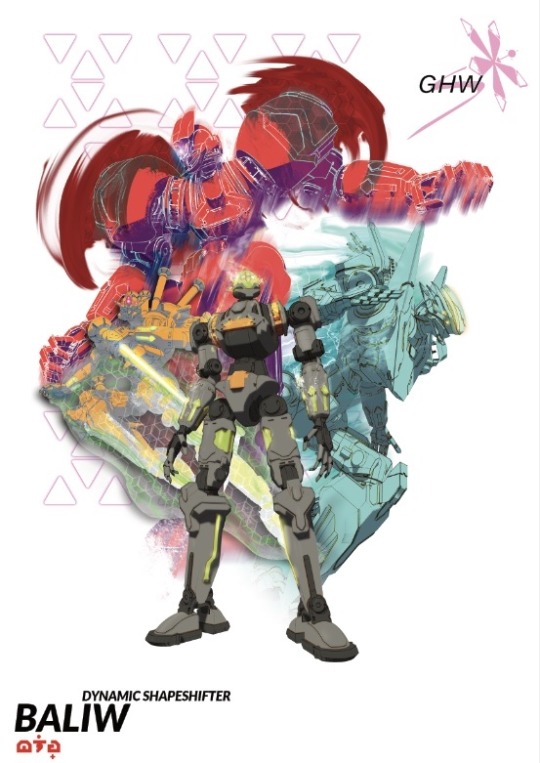
Really, this is what I’m here for with this book - it’s such an inspiring read, visually speaking, both in terms of the actual art, and the world described in the prose. There are some formatting issues in the book, like headings at the end of a column when the text starts in the next column, as well as a few typos. I also don’t fully love the layout and book design, with white text on a black background, using two columns on a fairly small page, and justified text which looks neat at a distance but makes the spacing really inconsistent, especially with a lot of long words that can throw off the alignment.
I already mentioned that the lore is quite daunting, and the same goes for the mechanics. As I said I’m not familiar with Lancer, and to be really clear, I am not built for tactical combat in the slightest. I wish I was, I always tried to play RTS, 4X, and tactical games of various stripes, and I’ve always been a complete plonker in every single one. I zone out in every D&D combat and really dread levelling up, because it means I need to pay attention to a bunch of stupid upgrades again. All that to say, the tactical combat here could be awesome, it could be awful, I have no idea and I’d be terrified of attempting to run it either way. There does seem to be good advice for setting up and balancing encounters, but I’d say that you and your players need to be comfortable with this kind of game, or up to the task of putting in the work to understand it sufficiently.
Regardless, whether I ever manage to run or play Maharlika or not, it’s a very cool book that I’m glad I picked up. I don’t think Filipino anime-mecha-cyberpunk-science-fantasy TTRPG is an oversaturated genre, to be honest, so this is a standout game whose world and aesthetics will stay in my head.
43 notes
·
View notes
Text
the false dichotomy of "roleplaying and rollplaying"
so i've been thinking about this disconnect that exists among certain people in the broader TTRPG community. the one about what counts as "roleplaying" when you're playing a tabletop roleplaying game, particularly with how there's the implication that when the rules come in and the dice come out, you are, somehow, no longer roleplaying, or that perhaps it's some kind of "lesser form" of roleplaying.
specifically, i was thinking about this through the lens of video games. appropriately enough, even more specifically through the lens of RPG video games.
you see, there's a wide array of RPGs, and they can approach the concept of "roleplaying" in strikingly different ways. for the sake of this discussion, we're going to look at JRPGs, particularly those of the classic Dragon Quest and Final Fantasy sort, and compare them to what's never really gotten a convenient grouping term and so i'm just going to have to go with "western RPGs". it's dreadfully inexact, but it's been used before to refer to this category and at least isn't as inexact as "computer RPGs" (or cRPGs) which is perhaps the other most common term for them. illustrative examples of this sort include Bethesda and BioWare games.
anyone familiar with these two categories will be able to immediately pick out some pretty major differences between the trends found in each one. in a JRPG, you play as a specific, predefined character. while you're often able to pick a name for them yourself, they typically have an official one that any casual player will likely be made aware of. they always have a defined appearance, and outside of a handful of very specific and broadly insignificant moments (usually things like confirming whether or not something was understood), their script is fully defined and set in stone from the start of the game. "builds" are rarely a meaningful thing in these games, and even character class is more often immutable than not.
meanwhile, in a typical western RPG, your character rarely has an official name, even in outside material. they are the Lone Wanderer, the Warden, the Fledgling. they don't tend to have a set appearance (especially as hardware technology made greater customization more feasible) up to and including their gender. you'll typically have a wide variety of options to build your character including classes, skill points, and even what kind of weapons to use. and this is not even to mention the script. not only do you generally have a plethora of dialogue options, but you usually even have some influence over how the story goes - sometimes as simple as whether you're going to be a "good guy" or a "bad guy", sometimes over what order events happen in or whether some of them even happen at all.
now here's the question: which of these approaches is roleplaying? is one "more" or "truer" roleplaying than another? in a JRPG, you're like an actor in Hamlet while in a western RPG, you're like an actor at an improv show, but both actors are still playing a role, and when put in that light hopefully it disrupts any initial belief in the relative "trueness" of one type of roleplaying over the other.
in a similar way, i hope this can help to show how mechanics and rules in TTRPGs aren't an impediment to roleplaying but how we engage with roleplaying in the medium. the rules and dice rolls are like the scripted JRPG (even if the script isn't being written ahead of time), asking us to inhabit the role they are writing for us. like the western RPG, the builds and mechanics are how we express our desires to shape our character into the role we want to play. these are not things to be fought against or wished away, but engaged with and utilized. just as JRPGs and western RPGs have their respective ways to roleplaying, this is how we roleplay in TTRPGs.
49 notes
·
View notes
Note
Been burning through the third campaign of NADDPOD recently off of your recommendation and it's been incredible. Though it has made me think of what exactly makes its callbacks and references to the previous campaign work so well compared to C3. As you pointed out in your post about the podcast, they share more than a few similarities. I'd guess that the lighter tone overall helps quite a bit, though the Irondeep Saga and Hardwon's return to the adventuring life is genuinely very effective!
To me, most if not all of C3's returning characters and callbacks were self-aggrandizing and distracting. The initial return to Whitestone for Laudna especially.
I have not finished NADDPOD's C3 yet so maybe I'll be proven wrong, but I was just wondering if you had any insight on why it just, works better than its counterpart? Also, big fan of the blog! Your meta post have kept me sane during the various errands that Bells Hells half heartedly accomplish.
So I do want to note my issue with Whitestone and Laudna's resurrection isn't so much seeing Percy and Vex and Pike and Keyleth; it's much more that having that available so early cut off some notable opportunities in Marquet. Going to Jiana would have probably made the Delilah issue much more of a factor (since I doubt anyone she'd have known would have been a L20 cleric familiar with Delilah), would have done interesting things for Ashton's story, and would have kept the party on the continent and in the city, possibly spending more time with Eshteross and maybe even giving them an additional chance to encounter Otohan in person. In retrospect this could have fixed like five different things. I actually found that the previous character callbacks were one of the strongest elements and increasingly I also feel the original NPCs of C3, Otohan and Ozo aside, while few and far between, would have been great if Bells Hells like, cared about them and spent time with them.
I think the more important part is that Murph is not trying to wrap up an overarching plot across multiple campaigns; he's simply telling, well, the campaign after the campaign. He was pretty clear about that in the initial discussions for NADDPod C3 - it's heavily influenced by the decisions in the initial Bahumia campaign but like, the plot isn't to end the astral plane god-battles that set off; it's to save Bahumia from Mothership (and those two factions evolve to have other implications, but the core conflict is introduced early and remains as is). Now, I also think that having a smaller party that is generally absolutely fearless when it comes to decision-making is an important part and they deserve credit (just as, while I think Matt's errors were most significant for C3's issues, the cast's waffling and fear of picking the wrong choice is a factor - even a "wrong" choice would have been better in most cases), but a lot of it is that it's a pretty standard D&D style plot executed well. (This would be another really long post but I really do think D&D can handle a range of plots and genres, but it's still a limited range of plots and genres, and if you try to subvert it, as people increasingly try to do, it will not reward you for cleverness but rather backfire. I don't think C3 tries to subvert D&D nor do I think D&D is the problem here; also just to stave off dumb comments, Pathfinder has the same exact limitations and Daggerheart likely will have very similar ones - this is about a combat-skills-forward fantasy game with level progression in general of which D&D is the most prominent but by no means only example. However since I just answered about Neverafter, while that's not the question, I think Murph has a particularly good understanding of what D&D can do.)
I think it's a few things but I think one reason Murph has such a track record is first, he identifies pretty strongly as a comedy writer, though he's also obviously a performer; secondly, he is as far as I can tell cautious and surly and he came to TTRPGs as an adult; and thirdly, two major influences he has that others tend not to cite are gaming and wrestling, and I really think this is important.
I think as a writer, he tends to have a good sense of narrative and where things have to go. That doesn't mean there aren't unexpected turns, but I think he does a good job of planning for contingencies and having a confident hand in turning the story back. And again, I think having a 3-person party makes it easier to get back on the rails (or to build a new track very quickly) but I think he, to quote a truly stupid but not entirely wrong self-help quote, begins with the end in mind.
The cautiousness and surliness are in my opinion the secret to NADDPod. Look. Niceness is, well, nice, though Brennan has a great bit that I watched recently and have since forgotten the source of about how kindness and niceness are two separate concepts. I think Murph is really willing to tell his players "No" and I think it is always to his benefit. I think making your players explain what they want to do, or being willing to turn your player's riffing into something that might not be their intention (Sol and Albie and the whole reveal that the Academy made everyone feel like a hero while essentially churning out manufactured duos stands out to me) is important. I don't want to say every home game should have this because it shouldn't - if you are playing at home casually and just want to make your friends feel like the coolest people ever, you don't have to do this! But if you are an actual play show you should be telling a story, and to tell a good story you do have to kill a few darlings and make a few edits, and Murph is willing to do that and Matt is sometimes too generous for his own good to the detriment of story (and, imo, I think it's ultimately less rewarding for the players in the long run much of the time too!)
And thirdly, games and wrestling. Now I am obviously no expert in games, but from a complete beginner's perspective, something that keeps striking me is how many people become affronted when the side quests (or, more accurately, ignoring the side quests) impact the main quest in significant ways, even though it's simply good writing to have side quests that enhance your understanding of the main quest and make you stronger or better able to approach it because of your experiences. This is in fact one of the biggest reasons why C3 is so weak, and one of the reasons why I think NADDPod is consistently strong. And then as for wrestling: I am even less of an expert here, but wrestling requires clear storytelling and especially clear motivations, (hard to be subtle in that medium) and story told primarily through combat that better have a great conclusion. It's also, notably, a remarkably unpretentious thing to be into, even though it's popular with a lot of nerds (Danielle Radford is the guest from last week; Ify's a wrestling fan as well). As a result, I think Murph isn't afraid to be blunt and unsubtle in service of actually making something good and entertaining and cohesive, instead of trying to say something deep and failing. Because nothing crashes to the ground and burns than trying to say something deep and failing. I mean I love pretentiousness, but I know when to drop it, and I think NADDPod on the whole does too.
#again i think the people defending c3 would do better to be like this is basically zoolander; it would be way more valid.#cr tag#naddpod tag#answered
34 notes
·
View notes
Text
Tactical Combat, Violence Dice and Missing Your Attacks in Gubat Banwa

In this post I talk about game feel and decision points when it comes to the "To-Hit Roll" and the "Damage Roll" in relation to Gubat Banwa's design, the Violence Die.
Let's lay down some groundwork: this post assumes that the reader is familiar and has played with the D&D style of wargame combat common nowadays in TTRPGs, brought about no doubt by the market dominance of a game like D&D. It situates its arguments within that context, because much of new-school design makes these things mostly non-problems. (See: the paradigmatic shift required to play a Powered by the Apocalypse game, that completely changes how combat mechanics are interpreted).
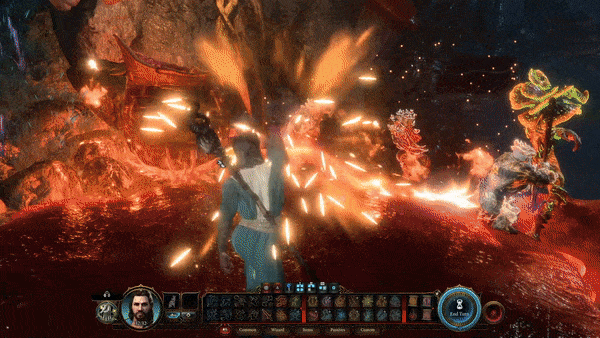
With that done, let's specify even more: D&D 5e and 4e are the forerunners of this kind of game--the tactical grid game that prefers a battlemat. 5e's absolute dominance means that there's a 90% chance that you have played the kind of combat I'll be referring to in this post. The one where you roll a d20, add the relevant modifiers, and try to roll equal to or higher than a Target Number to actually hit. Then when you do hit, you roll dice to deal damage. This has been the way of things since OD&D, and has been a staple of many TTRPG combat systems. It's easy to grasp, and has behemoth cultural momentum. Each 1 on a d20 is a 5% chance, so you can essentially do a d100 with smaller increments and thus easier math (smaller numbers are easier to math than larger numbers, generally).
This is how LANCER works, this is how ICON works, this is how SHADOW OF THE DEMON LORD works, this is how TRESPASSER works, this is how WYRDWOOD WAND works, this is how VALIANT QUEST works, etc. etc. It's a tried and true formula, every D&D player has a d20, it's emblematic of the hobby.
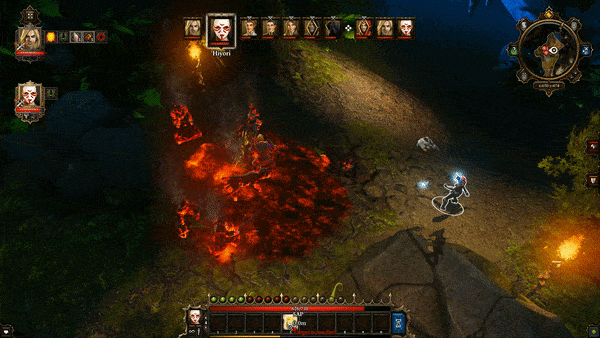
There's been a lot more critical discussion lately on D&D's conventions, especially due to the OGL. Many past D&D only people are branching out of the bubble and into the rest of the TTRPG hobby. It's not a new phenomenon--it's happened before. Back in the 2010s, when Apocalypse World came out while D&D was in its 4th Edition, grappling with Pathfinder. Grappling with its stringent GSL License (funny how circular this all is).
Anyway, all of that is just to put in the groundwork. My problem with D&D Violence (particularly, of the 3e, 4e, and 5e version) is that it's a violence that arises from "default fantasy". Default Fantasy is what comes to mind when you say fantasy: dragons, kings, medieval castles, knights, goblins, trolls. It's that fantasy cultivated by people who's played D&D and thus informs D&D. There is much to be said about the majority of this being an American Samsaric Cycle, and it being tied to the greater commodification agenda of Capitalism, but we won't go into that right now. Anyway, D&D Violence is boring. It thinks of fights in HITS and MISSES and DAMAGE PER SECOND.
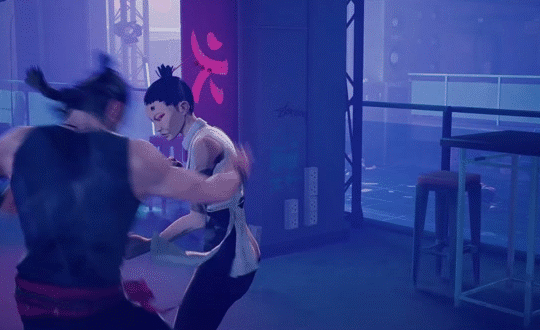
A Difference Of Paradigm and Philosophies
I believe this is because it stems from D&D still having one foot in the "grungy dungeon crawler" genre it wants to be and the "combat encounter balance MMO" it also wants to be. What ends up happening is that players play it like an immersive sim, finding ways to "cheese" encounters with spells, instead of interacting with the game as the fiction intended. This is exemplified in something like Baldur's Gate 3 for example: a lot of the strats that people love about it includes cheesing, shooting things before they have the chance to react, instead of doing an in-fiction brawl or fight to the death. It's a pragmatist way of approaching the game, and the mechanics of the game kind of reinforce it. People enjoy that approach, so that's good. I don't. Wuxia and Asian Martial Dramas aren't like that, for the most part.
It must be said that this is my paradigm: that the rules and mechanics of the game is what makes the fiction (that shared collective imagination that binds us, penetrates us) arise. A fiction that arises from a set of mechanics is dependent on those mechanics. There is no fiction that arises independently. This is why I commonly say that the mechanics are the narrative. Even if you try to play a game that completely ignores the rules--as is the case in many OSR games where rules elide--your fiction is still arising from shared cultural tropes, shared ideas, shared interests and consumed media.
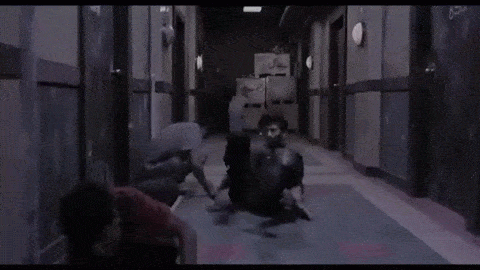
So for Gubat Banwa, the philosophy was this: when you spend a resource, something happens. This changes the entire battle state--thus changing the mechanics, thus changing the fiction. In a tactical game, very often, the mechanics are the fiction, barring the moments that you or your Umalagad (or both of you!) have honed creativity enough to take advantage of the fiction without mechanical crutches (ie., trying to justify that cold soup on the table can douse the flames on your Kadungganan if he runs across the table).
The other philosophy was this: we're designing fights that feel like kinetic high flying exchanges between fabled heroes and dirty fighters. In these genres, in these fictions, there was no "he attacked thrice, and one of these attacks missed". Every attack was a move forward.
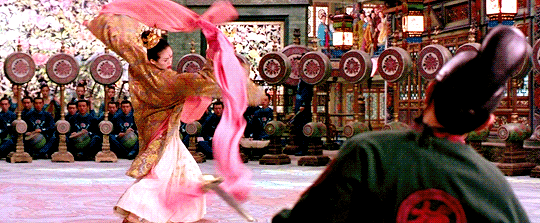
So Gubat Banwa removed itself from the To-Hit/Damage roll dichotomy. It sought to put itself outside of that paradigm, use game conventions and cultural rituals that exist outside of the current West-dominated space. For combat, I looked to Japanese RPGs for mechanical inspiration: in FINAL FANTASY TACTICS and TACTICS OGRE, missing was rare, and when you did miss it was because you didn't take advantage of your battlefield positioning or was using a kind of weapon that didn't work well against the target's armor. It existed as a fail state to encourage positioning and movement. In wuxia and silat films, fighters are constantly running across the environment and battlefield, trying to find good positioning so that they're not overwhelmed or so that they could have a hand up against the target.

The Violence Die: the Visceral Attacking Roll
Gubat Banwa has THE VIOLENCE DIE: this is the initial die or dice that you roll as part of a specific offensive technique.

In the above example, the Inflict Violence that belongs to the HEAVENSPEAR Discipline, the d8 is the Violence Die. When you roll this die, it can be modified by effects that affect the Violence Die specifically. This becomes an accuracy effect: the more accurate your attack, the more damage you deal against your target's Posture. Mas asintado, mas mapinsala.

You compare your Violence Die roll to your target's EVADE [EVD]. If you rolled equal to or lower than the target's EVD, they avoid that attack completely. There: we keep the tacticality of having to make sure your attack doesn't miss, but also EVD values are very low: often they're just 1, or 2. 4 is very often the highest it can go, and that's with significant investment.
If you rolled higher than that? Then you ignore EVD completely. If you rolled a 3 and the target's EVD was 2, then you deal 3 DMG + relevant modifiers to the DMG. When I wrote this, I had no conception of "removing the To-Hit Roll" or "Just rolling Damage Dice". To me this was the ATTACK, and all attacks wore down your target's capacity to defend themselves until they're completely open to a significant wound. In most fights, a single wound is more than enough to spell certain doom and put you out of the fight, which is the most important distinction here.
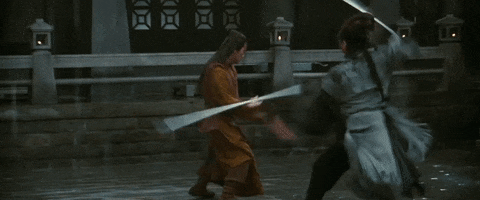
In the Thundering Spear example, that targets PARRY [PAR], representing it being blocked by physical means of acuity and quickness. Any damage brought about by the attack is directly reduced by the target's PAR. A means for the target to stay in the fight, actively defending.
But if the attack isn't outright EVADED, then they still suffer its effects. So the target of a Thundering Spear might have reduced the damage of an attack to just 1 (1 is minimum damage), they would still be thrown up to 3 tiles away. It matches that sort of, anime combat thing: they strike Goku, but Goku is still flung back. The game keeps going, the fight keeps going.
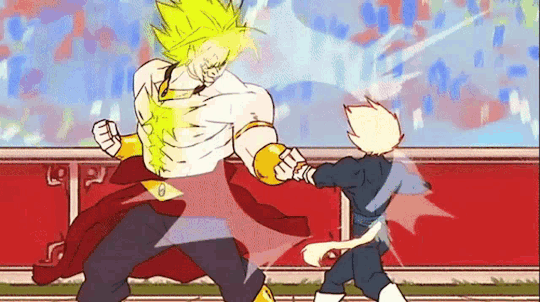
On Mechanical Weight
When you miss, the mechanical complexity immediately stops--if you miss, you don't do anything else. Move on. To the next Beat, the next Riff, the next Resound, think about where you could go to better your chances next time.
Otherwise, the attack's other parts are a lot more mechanically involved. If you don't miss: roll add your Attacking Prowess, add extra dice from buffs, roll an extra amount of dice representing battlefield positioning or perhaps other attacks you make, apply the effects of your attack, the statuses connected to your attack. It keeps going, and missing is rare, especially once you've learned the systematic intricacies of Gubat Banwa's THUNDERING TACTICS BATTLE SYSTEM.
So there was a lot of setup in the beginning of this post just to sort of contextualize what I was trying to say here. Gubat Banwa inherently arises from those traditions--as a 4e fan, I would be remiss to ignore that. However, the conclusion I wanted to come up to here is the fact that Gubat Banwa tries to step outside of the many conventions of that design due to that design inherently servicing the deliverance of a specific kind of combat fiction, one that isn't 100% conducive to the constantly exchanging attacks that Gubat Banwa tries to make arise in the imagination.
#gubat banwa#ttrpg#filipino#fantasy#gamedev#writing#rpg#dnd#southeast asia#d&d#d&d 5e#d&d 4e#i will say#that part of the decision away from a d20 (because gb alpha used one)#is sheer hater energy on my part#like i just didn't want to#because its used by all these other games by white people and especially because its used by dnd#there is like#4 instances where you use d20s in this game
229 notes
·
View notes
Text
Comics mini-Comints: Dungeon Meshi
reread dungeon meshi through to the end. still such a great manga. here are immediate thoughts - if I end up having time and energy I hope I can write something that goes deeper!
ironically i was only a few chapters from the end when I stopped keeping up, but I was struggling to remember all the characters and context, so reading it through in one go was definitely an ideal way to achieve maximum impact there.
ryoko kui does a very elegant job of handling a transition from 'silly antics' to 'big dramatic fantasy' while still keeping the central thematic throughline - eating and being eaten, belonging to an ecosystem, the significance of sacrificing others to achieve your own desires. a lot of setups pay off in a way that feels meticulously planned - and of course the crux of the final showdown revolves around characters attempting to eat each other, of course the big payoff is a huge feast that symbolically unites all the conflicting factions. it is maybe a bit too neat and happy for my taste, but it's undeniably tightly executed - it never loses sight of what it's about. especially compared to something like Frieren, it's an incredibly coherent serialisation, up there with e.g. Fullmetal Alchemist.
kui's art style deserves all kinds of praise - it feels effortlessly simple, but it clearly communicates all sorts of different shapes and body types and it's really fun to see her play around with remixing the different visual elements when she switches the races around. in general Laius's autistic monster loving ways clearly reflect kui's own deeply felt appreciation for all the ways people and animals live (accentuated further by all the extra sketches the scanlators tuck in). in a way you could kinda call it like Parts Unknown the fantasy manga.
the stakes of the final conflict are interesting - there is much to be said about the framing of 'desire' and its fulfilment, of this occult idea of 'the infinite'. lots you could put in relation to other manga, and also buddhism. (in particular I really want to develop a comparison to Made In Abyss, there are so many parallels, it just might be too spicy for tumblr lmao).
one thing I really like about it is how much its fantasy dungeon-exploring setting owes to D&D and other TTRPGs, rather than videogames. monster ecology has been a fascination of that game since the early days of Dragon magazine, and Kui sharply zeroes in on some of the intrinsic conflicts baked in to that fantasy milieu, notably the lifespan thing, while smartly avoiding the traps of 'evil races'. there's some really fun nods to the weirder monster manual entries. and in a story with so many characters and factions, it does a genuinely incredible job of furnishing everyone with understandable, reasonable motivations, conflicts drawn from their context just like the monsters are explained by their ecology.
and one thing that I particularly appreciate is like... how much it is able to simultaneously understand and sympathise with a character and also show us how and why they'd rub others the wrong way. it's impossible not to like our main group, they're all such charming dorks and the manga leads you along with all the crazy rpg party shit they do, but at the same time you definitely find yourself thinking 'guy's got a point' in the kabru chapters lmao. I'm projecting hard bc i don't really know a thing about ryōko kui but laius def feels like the sort of depiction of having an autism that you can only do if you've lived it.
but yeah, it's a fuzzy ending where it all turns out well. but what's the deeper thrust of it all? there's a funny moment where marcille is like 'maybe in the end our journey is about learning to accept death' and the grouchy old gnome guy completely laughs this off as naive, because death doesn't mean anything. and indeed their big plan pays off, and falin does indeed come back just fine. but still, through all of this it asks you to bite the bullet that being a living creature means eating to survive, at the cost of other creatures, with the other side being that one day you too will be eaten. in contrast to this honest way of being is the beguiling fantasy of infinity, where all your desires are immediately fulfilled - this is shown as a dangerous path of corruption that produces madness and manipulability. having limits and rubbing up against the wishes of others, or 'doing things you don't want to do' as izutsumi's arc puts it, becomes necessary for having some kind of definition as a subject. the thing that makes the demon concrete as an entity is a desire, or appetite, that can't immediately be fulfilled.
of course we can connect this to the idea of narrative conflict. a standard advice for putting together a plot is to ask what each character wants and why they can't get it. wanting something implies movement. and indeed over the course of this story, we see that while having too many desires fulfilled too readily leads to incoherence and callousness, equally a character who is left catatonic as their desires have been eaten by the demon must be reawakened to activity by finding a new desire.
it's kinda Buddhist innit. neither the opulence of the palace nor asceticism. desires are what tie you to the world. but mixed with ecology: what a creature does to find the energy to live is what defines its lifestyle, its form.
this is probably where I'd start talking about entropy gradients and shit if i wasn't typing this on a phone at 1:30am lmao.
but yeah - it's a powerful move to go from 'D&D monster recipe show sendup' to 'living with the inherently violent nature of being an organism fated to live in a finite sum game' and yet Dungeon Meshi makes it feel natural and convincing, while remaining tremendously charming and funny throughout. ryōko kui is definitely some kind of genius, and I can't wait to see what her next act is gonna be. it's all definitely making me appreciate the act of eating a lot more.
next story on my plate is probably The Flower That Bloomed Nowhere, which sounds like it will present a very gnarly thematic contrast.
177 notes
·
View notes
Text
Short A.N.I.M. Hiatus
Just so y’all know, I, the only full-time employee of A.N.I.M., will be on vacation/hiatus from about now (April 7th, 2025) until the last week of April, so there will be very few new posts and very little progress on our various projects until then, but I will be setting the queue to keep cycling through old posts and reblogs.
As for where everything’s at right now:
Eureka: Investigative Urban Fantasy (Beta)
Eureka: Investigative Urban Fantasy is being continually polished and tweaked based on massive amounts of player feedback, but editing progress is still very slow due to our editor dealing with lots of difficult life stuff. We are really hoping to continue with regular, speedy editing progress in May.
At least 16 dedicated Eureka: Investigative Urban Fantasy adventure modules are currently in development, 2 of which are being developed in-house by A.N.I.M. and the rest are fan creations from the game jam we ran last month. Within a few months everyone can finally stop relying on Call of Cthulhu and Delta Green modules.
Eureka: The Fanservice Files (Beta)
This was an unexpected hit and a big part of the reason we’re doing so relatively well on money this month (still not in the clear though). It made more money in the first 4 hours than Eureka Adventure Modules Vol. 1 has in 65 days. For this reason I have decided to definitely continue work on it as a legitimate expansion. Patreon subscribers have already gotten an updated version last week, and can expect an even more updated version to come in May. These updates will come to the general public at the same time as the next public beta update for Eureka: Investigative Urban Fantasy.
And also because this was such a big hit, I have decided to try to always have a reserve expansion in my back pocket, which I’m calling a “ripcord expansion” to reference its short and emergency nature. These expansions will be about the same length as The Fanservice Files and include content that fits with the canon and themes of the main rulebook, but is just a little bit sillier or otherwise different in tone. These are “emergency” releases because I’m keeping them on the shelf in an outline stage until it starts to look like we’re in serious danger of not meeting our income quota, then quickly finishing them up for a surprise release and some quick money.
The next one, to finished up and released when-needed, is called Eureka: The XXX-Files.
Edge Hedge Arena (Beta)
Has anyone even played this?
Silk & Dagger: A Sensible Drow RPG (Alpha)
We are just getting through the second round of playtesting for Silk & Dagger and, as is to be expected for an alpha, it’s looking rough. Despite it actually being perfectly reasonable to do so, especially with how much we need the money, I still can’t help but feel a tinge of embarrassment at showing one of my games to the public in such a messy state. I take game design very seriously and hold RPGs to a very high standard. At least y’all and I both can take comfort in the fact that this is the worst Silk & Dagger will ever be, and it’s only up hill from here. (And it’s still pretty good already)
I’m writing down all the feedback so I can reference it when I bring Silk & Dagger back to the front burner after I get Death Bed: A Souls-like RPG into the barest minimum of a playable state.
Death Bed: A Souls-like RPG (Pre-Alpha)
What started out as a “simple” “OSR” dungeon-crawler which aimed to represent the combat of Dark Souls in a turn-based TTRPG format has ballooned into a project that will probably somewhere close to the scope of Eureka: Investigative Urban Fantasy. A harsh and brutal, but optimistic dungeon crawler with themes of disability, medieval culture, and medieval Christianity. It will also feature combat and other mechanics reminiscent of Dark Souls but translated into something that’s actually fun as a TTRPG. And I’m really autistic about medieval culture, medieval Christianity, game design, and swords, so you can expect this to be really good, once it’s finished.
Currently it’s looking like the game won’t be in even a remotely playtestable state until at least early May, and even at that stage it’ll just be a combat-simulator without any actual dungeon-crawling elements ready yet.
Financial Situation
We are currently at $558.08/$1,964.33 for the monthly income necessary to keep us afloat, and even though this actually puts us a little ahead for the month at the time of writing this, obviously I am very nervous about stepping away from the wheel for 2 weeks when we cut it so close every month, but if I keep pushing 35-70 hours a week every week without taking a few weeks off, I’ll probably die.
At the very least, members of our team appear on two different podcast episodes that will be releasing this April, so that should introduce us to some new audiences. One of those podcasts is @literalcatpod.
For my sake please continue to reblog our posts, play and talk about our games, and buy them and/or subscribe to the patreon in my absence. I need to be able to relax over the next two weeks without worrying about returning to a company that is woefully behind on its income quota with only one week left to fix that.
Thank you again to all our fans and supporters. This is anim-ttrpgs signing off.
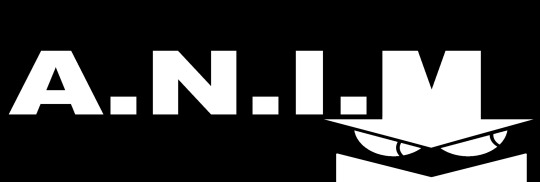
#ttrpg community#ttrpg tumblr#indie ttrpg#ttrpgs#ttrpg#eureka: investigative urban fantasy#rpg#eureka#eureka ttrpg#silk & dagger#silk & dagger: a sensible drow rpg#urban fantasy#drow#cat girl#sonic the hedgehog#indie ttrpgs#tabletop rpg#ttrpg design#dark elf#dark elves#tabletop
114 notes
·
View notes